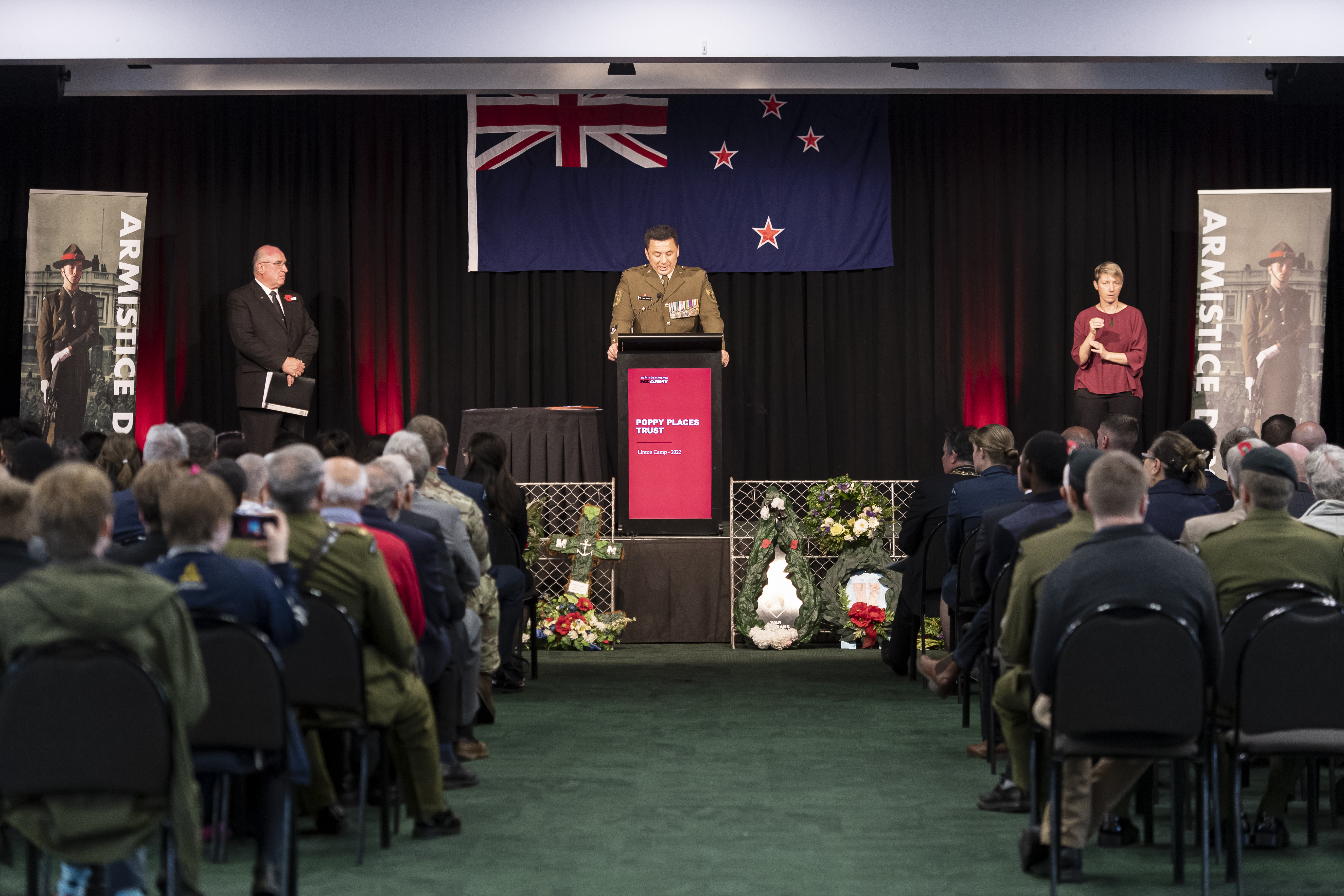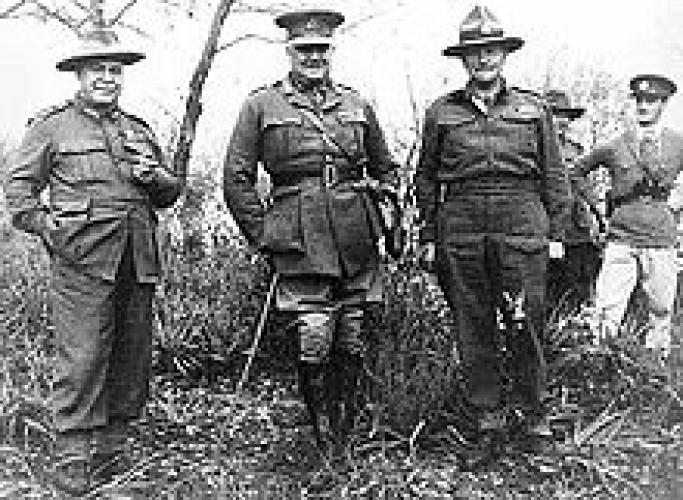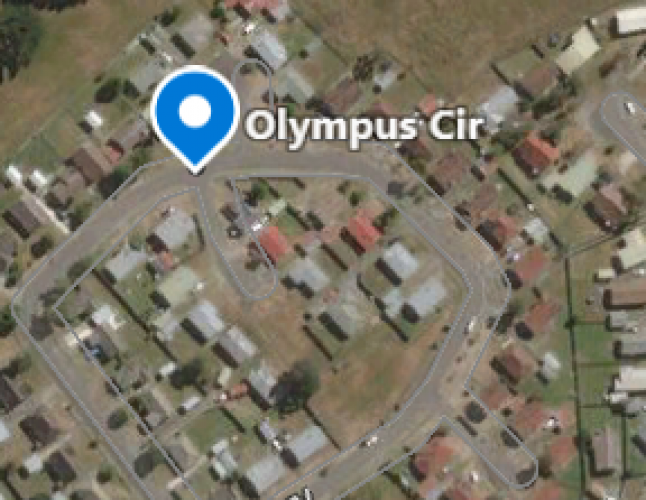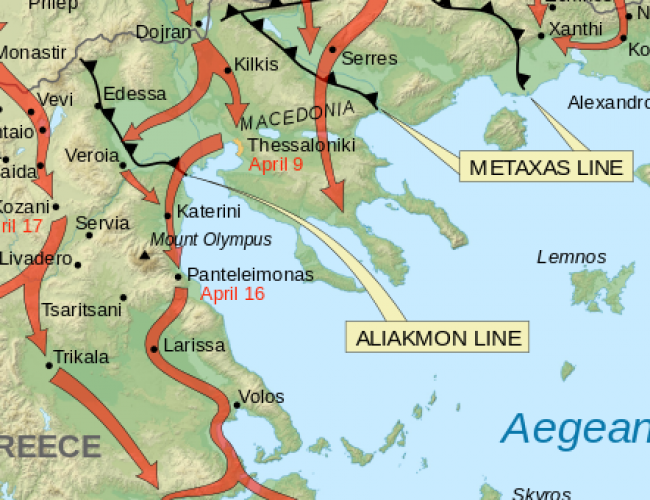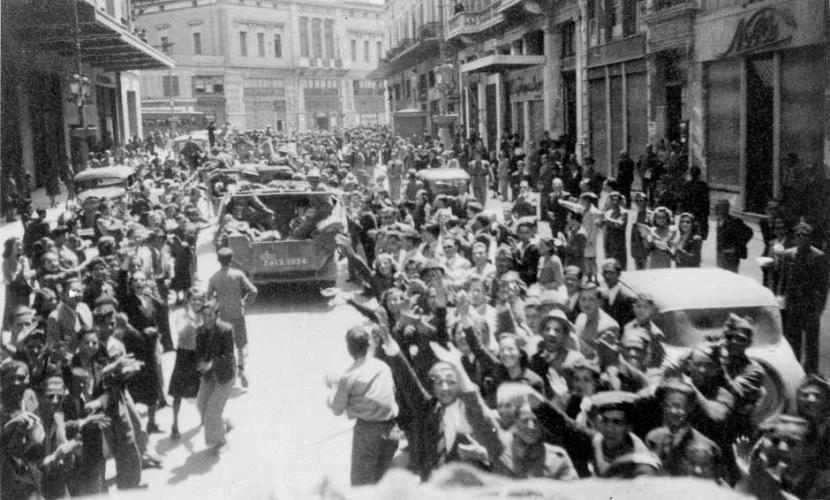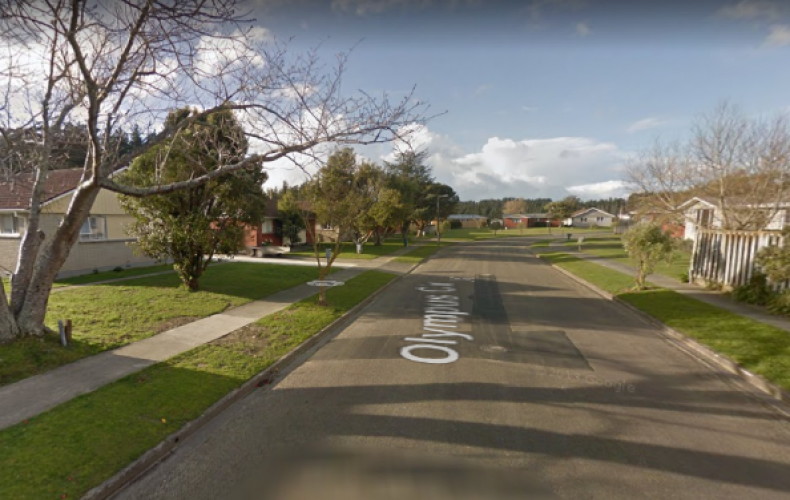270 Olympus Circle Linton Military Camp, Palmerston Nth, street view 2018
Reason for the name
This street was named as a tribute to the New Zealand members of “W” force fighting in Greece during WW2. Most streets within NZDF Camps and Bases are named in honour of prominent people, battles, campaigns, ships, aircraft and places creating a rich history of our military service.
In the fighting for Greece, British Commonwealth forces lost 903 killed, 1,250 wounded, and 13,958 captured, while the Greeks suffered 13,325 killed, 62,663 wounded, and 1,290 missing. In their victorious drive through Greece, List lost 1,099 killed, 3,752 wounded, and 385 missing. Italian casualties numbered 13,755 killed, 63,142 wounded, and 25,067 missing. Having captured Greece, the Axis nations devised a tripartite occupation with the nation divided between German, Italian, and Bulgarian forces. The campaign in the Balkans came to an end the following month after German troops captured Crete. Considered a strategic blunder by some in London, others believed that the campaign was politically necessary. Coupled with late spring rains in the Soviet Union, the campaign in the Balkans delayed the launch of Operation Barbarossa by several weeks. As a result, German troops were forced to race against the approaching winter weather in their battle with the Soviets.
Author: The Poppy Places Trust and Cherrie Lawson
Report by Major-General B. C. Freyberg to the Minister of Defence
This report was presented to both Houses of the General Assembly on 9 Oct 1941.
By the end of March the New Zealand Division was concentrated in Macedonia. The 5th Brigade Group had arrived from England, thus the three contingents were together for the first time in the history of the Division. Their first role was preparing a defensive position, in conjunction with the Greeks, from the coast south of the River Aliakmon to Veria Pass. The long front was too vulnerable for the forces available and, following the enemy's attack on Yugoslavia and Greece on 6 April, the Division was ordered to retire to a strong position on the line of the Passes, the 4th Brigade Group to Servia, the 5th and 6th Brigade Groups to Olympus. A quick withdrawal was made in rain and snow. This was accomplished without loss of equipment or supplies, the troops showing a high standard of discipline and endurance in their first trial. Rain and overcast skies were a blessing, as no enemy aircraft molested our forces. This retirement was completed by 10 April.
On the 12th the Australians and New Zealanders were formed into the 2nd Anzac Corps, giving great satisfaction. From the 10th the Division fought several actions mainly as three separate brigade groups, each comprising all arms. The Machine Gun Battalion detachment on the Yugoslav frontier fired the first New Zealand shots at Veve at 9 p.m. on 10 April. On the 13th the Divisional Cavalry and Artillery on the Aliakmon River fought delaying actions, retiring over Olympus Pass on the 14th. The 4th and 5th Brigade Groups under Brigadiers Puttick and Hargest respectively came into action simultaneously at the historic Servia and Olympus Passes. The 4th Brigade Group held Servia Pass while Imperial and Greek troops from the Florina Gap withdrew. The infantry action was severe and the Germans suffered heavy casualties. The 5th Brigade Group, plus the Maoris, were holding the long line of the Olympus position, and the 21st Battalion held the coastal defile and railway tunnel near Platamon. At Olympus the Artillery, firing a phenomenal number of rounds, smashed the German tank advance, the infantry beating off heavy attacks made through the woods under cover of mist. The success of the German thrust against the Greeks on the left threatened the rear of the Olympus position and a withdrawal to the Thermopylae line was ordered for 16 and 17 April, Brigadier Barrowclough's 6th Brigade Group moving to a covering position south of Elasson. After fighting with great determination and repulsing heavy attacks, the 4th and 5th Brigade Groups and the Australians retired again under the cover of mists to the south of the 6th Brigade Group. Meanwhile, the 21st Battalion had been forced back from the tunnel by tremendous odds, including a large armoured force. Later, with Brigadier Allen's Australian Brigade Group, they held the Peneios Gorge position. The 21st Battalion suffered heavy casualties. The stands at Peneios and Elasson, where British, Australian, and New Zealand artillery took toll of enemy tanks, breaking their attacks, were vital.
The force was finally disengaged on the night of 13 April and the Division withdrew 100 miles to the Thermopylae line. The remarkable success of this withdrawal surprised both the enemy and ourselves. The Division now prepared a line at the historic Thermopylae Pass while the Australians barred the other Athens road. This was destined to be only a temporary position as the collapse of the gallant Greek Army made the continuation of the fight impossible. Brigadier Barrowclough's force, with Divisional Artillery and British batteries, held the Pass. At dusk on Anzac Eve they beat off a strong German attack, 25-pounders destroying a large number of tanks. Disengaging by dark, the 6th Brigade Group withdrew through the 4th Brigade Group and the Australian artillery holding a covering position south of Thebes. That night the 5th Brigade Group successfully embarked for Crete. The Artillery and other Divisional troops, totalling 3600, embarked on the night of 26–27 April. On the 27th the 4th Brigade Group, after being cut off by parachute attacks on the Corinth Canal, fought a determined rearguard action almost on the beach at Porto Rafti, near Marathon, keeping the enemy at bay and embarking safely.
Meanwhile the Divisional Headquarters and the 6th Brigade Group moved to the Peloponnese, crossing the Corinth Canal just ahead of a parachute attack on the morning of the 26th. The 26th Battalion attacked and held the airborne troops, and subsequently, with the remainder of the 6th Brigade Group and the attached British and Australian troops, continued the withdrawal through Tripolis and Sparta to Monemvasia. The final evacuation took place on the night of the 28th.
I very much regret the loss of so many of our first-line reinforcements and details of Headquarters left at Athens. The party reached Kalamata, but owing to the temporary occupation of the town by the Germans and the subsequent loss of contact between ships and the land, it was only possible to embark a small party. All branches of the service reached a high standard. The achievements of the infantry, and of the Artillery under Brigadier Miles, have already been mentioned. The demolition of roads and bridges by the Engineers, by delaying the enemy continually, was a great contribution to successful withdrawal. Signals maintained communications during most difficult operations. The Army Service Corps, including the Reserve Motor Transport Company, played a great part in supplying the forces throughout the whole of the operations and in carrying troops. The Medical Services carried out their duties with great efficiency. Almost all the wounded who could be moved were evacuated. The 6th Brigade Group and the 6th Field Regiment were ordered to Egypt, the remainder disembarking at Crete.


